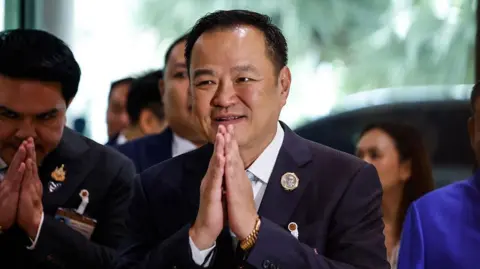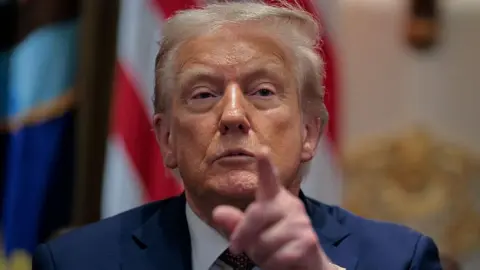Vietnam and Cambodia have emerged as frontline victims of the recent tariffs imposed by the Trump administration, creating dire economic implications for these nations and their trade dynamics with the U.S.
As tariffs of up to 49% target Southeast Asia, countries like Vietnam and Cambodia bear the brunt of U.S. economic policy changes. The region, known for its robust export growth, is now navigating a precarious internal and external economic landscape.
Vietnam, heavily reliant on exports to the U.S. which account for 23% of its GDP, faces an uphill economic battle following the introduction of tariffs that could undermine its ambitious growth strategy, aiming for a high-tech economy by 2045 under new leadership. The Communist Party's legitimacy hinges on delivering economic promises, and this recent shift puts those goals at risk.
While Thailand and Cambodia’s reliance on U.S. markets is lower, the impact is fundamentally destabilizing. Thailand's efforts to stimulate growth have already faltered, and with tariffs exacerbating their economic woes, finding a solution has become increasingly urgent. Cambodia, in particular, faces the greatest political risk; a significant portion of its workforce is linked to the garment sector, which is now threatened by potential job losses.
In a bid to mitigate the impact, Southeast Asian leaders are engaging in diplomatic negotiations with the U.S., aiming to plead their cases and propose tariff reductions. Despite offers to eliminate tariffs on U.S. imports from Vietnam and Thailand, skepticism from U.S. officials hinders their efforts, as claims of significant trade imbalances and alleged market manipulations surface.
The situation is dire for Myanmar as well, facing a civil war and limited economic capacity, while also grappling with severe tariff penalties. This irony underscores the complexities of the current geopolitical climate, as nations that previously celebrated U.S. engagement now find themselves in a vulnerable position.
The Trump administration continues to position its tariffs as a method to reduce trade deficits, leaving Southeast Asian nations to reconsider their economic strategies. Joint efforts are necessary, yet the negotiation appears fruitless for now, as these nations continue to brace for the ongoing tidal wave of U.S. economic policy impacts.
As tariffs of up to 49% target Southeast Asia, countries like Vietnam and Cambodia bear the brunt of U.S. economic policy changes. The region, known for its robust export growth, is now navigating a precarious internal and external economic landscape.
Vietnam, heavily reliant on exports to the U.S. which account for 23% of its GDP, faces an uphill economic battle following the introduction of tariffs that could undermine its ambitious growth strategy, aiming for a high-tech economy by 2045 under new leadership. The Communist Party's legitimacy hinges on delivering economic promises, and this recent shift puts those goals at risk.
While Thailand and Cambodia’s reliance on U.S. markets is lower, the impact is fundamentally destabilizing. Thailand's efforts to stimulate growth have already faltered, and with tariffs exacerbating their economic woes, finding a solution has become increasingly urgent. Cambodia, in particular, faces the greatest political risk; a significant portion of its workforce is linked to the garment sector, which is now threatened by potential job losses.
In a bid to mitigate the impact, Southeast Asian leaders are engaging in diplomatic negotiations with the U.S., aiming to plead their cases and propose tariff reductions. Despite offers to eliminate tariffs on U.S. imports from Vietnam and Thailand, skepticism from U.S. officials hinders their efforts, as claims of significant trade imbalances and alleged market manipulations surface.
The situation is dire for Myanmar as well, facing a civil war and limited economic capacity, while also grappling with severe tariff penalties. This irony underscores the complexities of the current geopolitical climate, as nations that previously celebrated U.S. engagement now find themselves in a vulnerable position.
The Trump administration continues to position its tariffs as a method to reduce trade deficits, leaving Southeast Asian nations to reconsider their economic strategies. Joint efforts are necessary, yet the negotiation appears fruitless for now, as these nations continue to brace for the ongoing tidal wave of U.S. economic policy impacts.




















